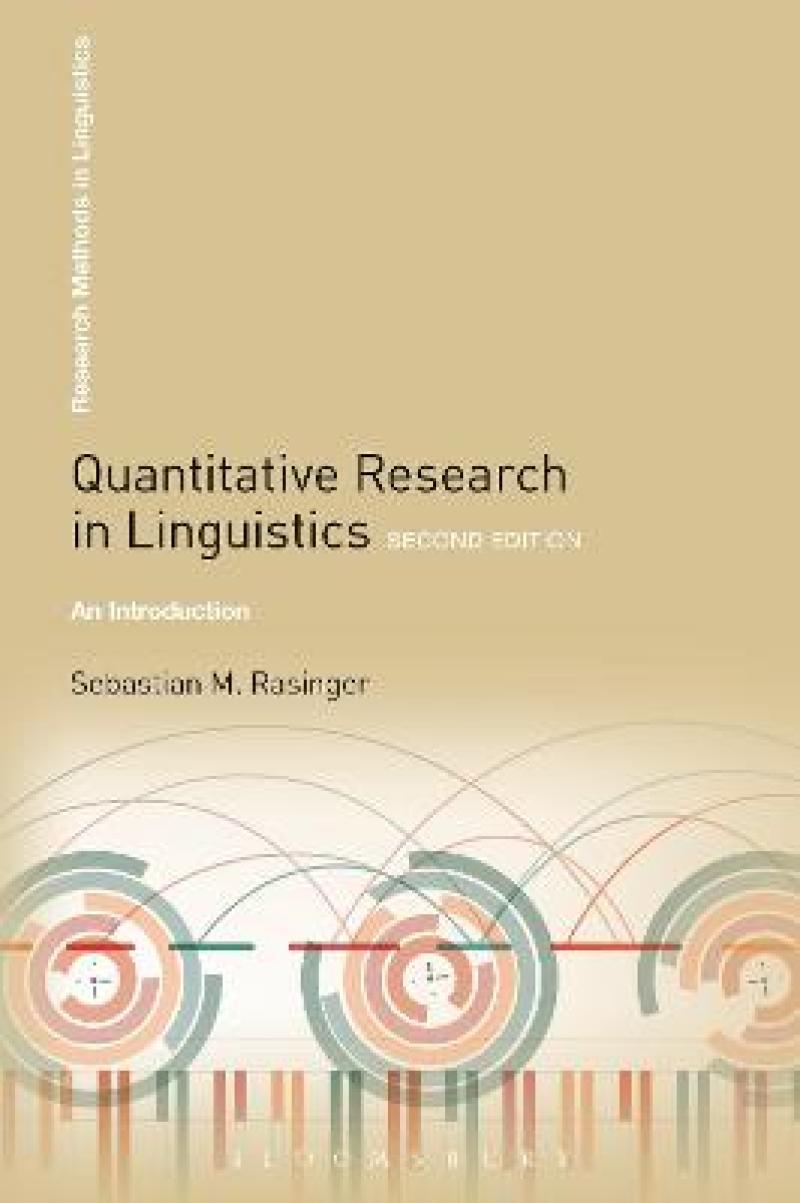The second edition of Sebastian M. Rasinger's <i>Quantitative Research in Linguistics: An Introduction</i> is an attractive introductory book to quantitative analytical techniques that can be used in linguistics, and, furthermore, it gently introduces the reader basic principles in statistics. It would be a good choice for a coursebook in general quantitative linguistics and can be used at both undergraduate and postgraduate levels. Easy to read and a very gentle introduction to the use of spreadsheets in quantitative linguistics, Rasinger's book should be particularly attractive to instructors, students, and other readers who are not necessarily interested in using superior platforms such as R, Python or SPSS software.
- Kim Ebensgaard Jensen, Aalborg University, Denmark, Globe: A Journal of Language, Culture and Communication
Intended for both undergraduate and graduate students, this textbook presents a concise, clear and well-illustrated introduction to the quantitative analysis of language. It is comprehensive and example-based, and it covers the basics of quantitative analysis of linguistic data and explores how this differs from qualitative approaches. At the same time, the book is also practical, helping the reader understand how to conceptualize, construct, and implement a quantitative investigation in linguistics.
Language In Society (of the first edition)
Rasinger's new book provides a comprehensive and accessible introduction to quantitative research methods in linguistics. Aimed at an advanced undergraduate and early postgraduate audience, the book addresses a longstanding need in the field for a textbook specifically geared toward students who may have already developed a nuanced understanding of language and linguistics but who have had little to no exposure to statistical methods. As such, the book stands to make an important contribution to the teaching of linguistics, whether as a classroom resource for teachers or as a guide to individual students as they undertake their own research projects.
Language (of the first edition)
Presenting a down-to-earth and readable introduction to quantitative research, this book is a useful how-to guide for students encountering quantitative data for the first time, or for postgraduates embarking on linguistic research projects.
Education Today (of the first edition)
For the maths-shy linguistics student with no statistics training, this long-needed, reader-friendly book demystifies what quantitative research is and how it's done. Assuming no prior knowledge, students are introduced to various research methods and shown the steps to designing, analysing and interpreting data. Statistical analyses are brilliantly explained and illustrated with examples from published research with which students will already be familiar.
Barbara Allen, University of Sussex, UK
Reviewed in Times Higher Education Supplement, 28 May 2009
Rasinger’s book remains a comprehensive and accessible introduction to quantitative research methods in linguistics. Rasinger covers all the bases, including everything from research design through to implementation and analysis, and makes good use of examples drawn from real linguistics research to illustrate important concepts. The inclusion of new sections on ANOVAs and MANOVAs, the addition of brief introductions to doing statistics in SPSS and R, and the updated suggestions for further reading all make the revised edition the ideal choice for students who wish to learn the basics of quantitative linguistics.
- Erez Levon, Senior Lecturer in Linguistics, Queen Mary, University of London, UK,
Highly relevant publication for languages and linguistics students who normally prefer qualitative research methods and are apprehensive about application or use of quantitative methods.
Mark Krzanowski, University of Westminster, UK
Presents a comprehensive introduction to analysing quantitative linguistic data.
Starting with an definition of quantitative data, and how it differs from qualitative data, Seb Rasinger examines what the student linguist is trying to find out through analysing data, and how quantitative techniques can help arrive at meaningful and accurate conclusions. This expanded, 2nd edition now also includes a discussion of Analysis of Variance (ANOVA) and MANOVA, and provides a brief introduction to statistical meta-analysis. A companion website allows readers to download crib sheets and Excel templates for the main statistical tools.
The book introduces:
-using statistics
-variables
-reliability of data
-describing data
-analysing data
-testing hypotheses
-dealing with problematic data.
Each chapter includes graphs and figures explaining theory through worked examples, chapter summaries, and exercises to aid student understanding. An appendix containing a summary of statistical formulae, excel commands and statistical tables is included and is an invaluable resource.
Presenting a down-to-earth and readable introduction to quantitative research, this book is a useful how-to guide for students encountering quantitative data for the first time, or for postgraduates embarking on linguistic research projects.
1. Introduction
2. Quantitative Research: some basic issues
3. Research Design and Sampling
4. Questionnaire Design and Coding
5. A First Glimpse at Data
6. Describing Data Properly: central location and dispersion
7. Analysing Data: a few steps further
8. Testing Hypotheses
9. Analysing Dodgy Data: when things are not quite normal
10. Appendices and Solutions
Bibliography
